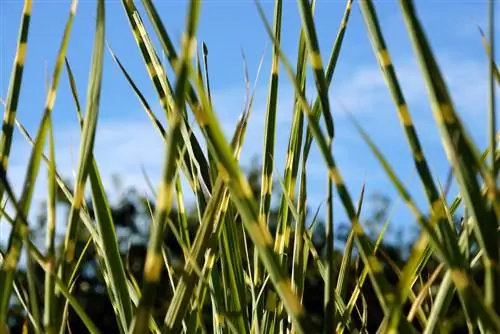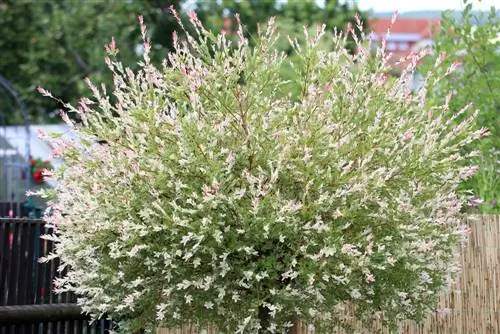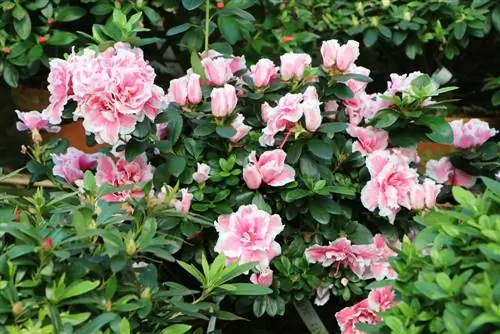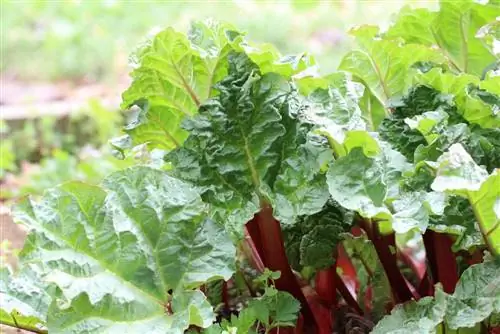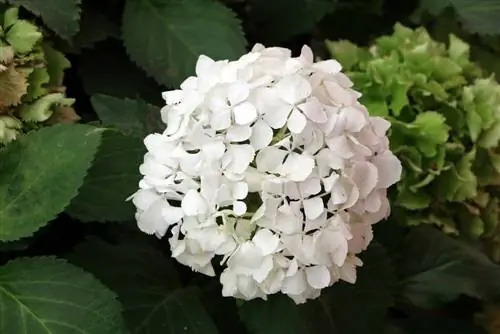- Author admin [email protected].
- Public 2023-12-17 03:39.
- Last modified 2025-06-01 06:48.
The hydrangea (Hydrangea) is one of the favorite flowers in the garden. It delights all hobby gardeners with its decorative flowers in many colors. Even when it has faded, the garden hydrangea is still very attractive. The plant is easy to care for. Pruning is necessary so that the flowers can be seen again every year. When is the right time for this? What should you consider when cutting?
Cut hydrangeas correctly
Hydrangea pamper hobby gardeners with a long flowering period. The first flowers appear in June. Hydrangea flowers are attractive in summer bouquets. The blooms last until September. Even in winter, the inflorescences do not need to be removed. Covered in frost, they look very attractive and the small animals in the garden are happy to have food and shelter. Dried hydrangea flowers are suitable for making floristic arrangements and are also beautiful to look at as individual flowers. An important prerequisite for a decorative hydrangea flower is perfect cut.
Tip:
Only use sharp, clean cutting tools when pruning your plants. Cuts caused by unsharp tools cannot close quickly and form an entry point for disease and rot.
Cut
The pruning of ornamental shrubs, which also includes hydrangeas, includes different types of pruning:
Build-up cut or educational cut
The aim of the structural or training cut is to give the plant the desired shape. The younger a plant is, the easier it is to influence its growth habit through pruning. Plants in containers or with limited space in particular benefit from annual pruning or training.
Blending cut
The thinning cut strengthens the garden hydrangea's ability to bloom and maintains its vitality.
Rejuvenation cut
A rejuvenation cut acts like a rejuvenation treatment on older plants. If your hydrangea plants have become lazy to bloom or if you have neglected to prune them in recent years, a radical rejuvenation pruning can help.
Conservation cut
Maintenance pruning is a measure to care for the hydrangea. Thin, sickly and dead branches are removed.
How to cut the most popular types of hydrangeas
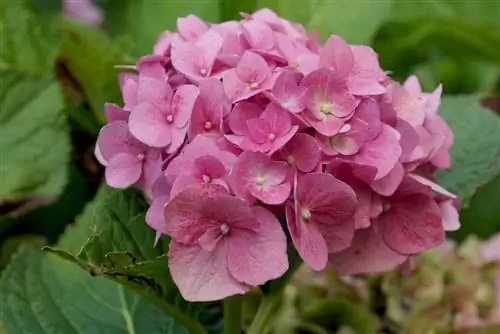
When cutting hydrangeas, the different needs of the individual varieties must be taken into account. What applies to pruning the viburnum hydrangea can be harmful to the farmer's hydrangea. We'll show you what to look out for. The well-known varieties are divided into two cutting groups.
Section group 1 includes, among others,
- Farmer Hydrangeas (Hydrangea macrophylla)
- Plate hydrangeas (Hydrangea serrata)
- Velvet hydrangeas (Hydrangea sargentiana)
- Giant leaf hydrangeas (Hydrangea aspera)
- Climbing hydrangeas (Hydrangea petiolaris)
- Oak leaf hydrangeas (Hydrangea quercifolia)
Section group 2 includes the
- Snowball hydrangeas (Hydrangea arborescens)
- Pranicle hydrangeas (Hydrangea paniculata)
- Forest hydrangeas (Hydrangea arborescens)
Instructions
The following differences between the two cutting groups should be noted here:
Section group 1
- recommended time: end of February or beginning of March
- cut off old flowers and dead shoots above the first fresh buds
- Don't hurt the buds
- remove sick and weak shoots
- cut out about a quarter of the old, heavily branched branches
- Thinning strengthens growth
Cutting gives the varieties in cutting group 1 new energy. This is reflected in beautiful, large flowers and resistance to diseases. The hydrangeas in cutting group 1 cannot tolerate radical pruning! Only the older shoots may be cut off just above the ground. The climbing hydrangea does not necessarily have to be cut, it is just trimmed to limit it. Removing the old flowers is sufficient. The climbing hydrangea simply looks more beautiful without the dry flowers and is better protected against diseases and fungi.
Tip:
Hydrangea species in cutting group 1 are considered very sensitive to frost. In cold weather and the threat of night frosts, be sure to protect the freshly cut plants with garden fleece, jute or foil.
Section group 2
- recommended time: end of February or beginning of March on frost-free days
- Cutting possible in autumn
- Buds will not form until the new year
- shorten new shoots except for two pairs of eyes
- Pruning snowball and panicle hydrangeas up to 30 centimeters possible
- Carefully cut back forest hydrangeas
- thinning out densely growing plants
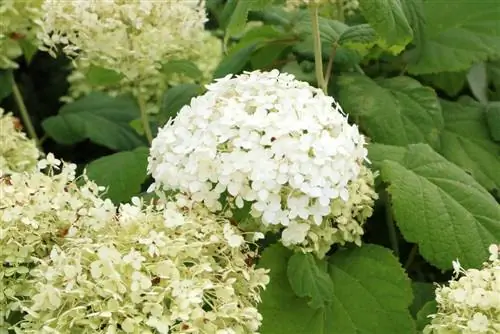
A good cut causes snowball, forest and panicle hydrangeas to produce strong shoots, beautiful branching and a multitude of strong flowers. The number of shoots doubles in the following year.
Special shape
- The cut of the Endless Summer variety -
The Endless Summer variety is one of the farmer's hydrangeas and is considered a special case. The plant produces flowers in both old and new wood. Severe pruning of the shoots from the previous year leads to new growth and flowers appear in the same year. You can cut the plant back radically in spring without any concerns.
Tip:
Cut back the first faded Endless Summer hydrangea flowers straight away in the summer. Then beautiful new flowers form on the shoots.
The radical cut
If your snowball or panicle hydrangea has become too big or no longer has a nice shape, a radical cut can help. The hydrangea can be cut back to at least four main shoots in winter or early spring. The main shoots should remain 30 centimeters long. After a radical cut, the plant needs at least a year to regenerate again. Afterwards it usually shows itself again in its full bloom. The radical cut represents a major intervention. Protect your plant by covering it with brushwood and garden fleece.


